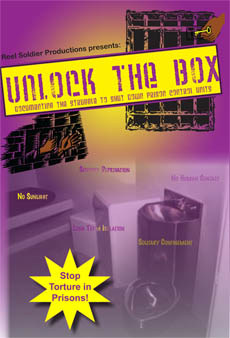I reach out to you from the oppressive and repressive system of Texas
slave plantations. I live in a state and system that employs the
stereotypical phrase “the color of your skin can get you into places, or
rejected from those places.” I speak of that which I’ve seen with my own
eyes in this prison. I’ve been serving a life sentence amidst this
madness since 2004 and my sensibilities won’t allow me to let it
continue without exposing, and hopefully bringing about a solution to
the moral abomination I witness on a daily basis.
George Jackson once said “I can be courageous before my enemies because
I know I am right and they are wrong; I can even accept death if I must
die for my cause, for I prefer the freedom of death over the slavery of
life.” Or as the great Mexican freedom fighter Emiliano Zapat declared,
“prefiero morir de pie, que vivir de rodillas.” (I prefer to die on my
feed, rather than to live on my knees).
Many times before, I’ve witnessed young Latinos, such as myself, being
classified as “gang members” in the eyes of the Gestapo-like security
threat group coordinators, simply because of the city they originate
from or meaningless tattoos. This alone makes it hard for anyone to
serve their sentence, either short or extensive, without facing undue
harassment from this administration. At one period of time the STG’s
spokeswoman and a captain went on a rampage with their crusade to
abolish drug and contraband trade throughout these walls. They deemed,
through their heavy-handed ignorance and blatant racial profiling, that
only the firing of any Latino who had a job in seg, kitchen, laundry,
education (that give no pay) as well as not hiring Latinos to those
jobs, would be the solution to their problem. As any reasonably
intelligent person could have expected, their unprogressive attempt did
not stop the influx of drugs or any other items considered contraband
(normally free world products not purchasable through commissary).
Another occasion involved a young Latino being brutally assaulted by
other prisoners. Again the STG initiated a racially-discriminatory
lockdown specifically aimed at only prisoners of the Latino ethnicity.
What started out as a 30 day lockdown became a 56 day lesson in
inhumanity towards ones fellow man. While prisoners on lockdown were
being fed Johnnies (a brown paper bag, with a peanut butter sandwich,
bologna sandwich and sometimes a handful of raisings, 3 times a day),
were unable to purchase food from commissary and most times denied the
privilege of a hot meal once every 2 weeks, others (white and Black
prisoners) roamed free. This is not the only unjustifiable act that was
perpetrated by this ‘lady’, she went so far as to confiscate the
property of those already caged and dehumanized prisoners. The average
prisoner’s meager amount of possessions, as allowed by the state,
include a small fan, hot pot for cooking, writing supplies, legal
material, and what cheap processed food an outside vendor is allowed to
sell to us at ridiculous prices. After being stripped of anything
comforting or conciliatory, they were left with cheap, plastic
mattresses, bed sheets, and toilet paper.
These obvious acts of unrestrained racism and administrational
retaliation were no more than a transparent attempt to prevent prisoners
from seeking relief through proper grievance procedures. It also kept
prisoners from reaching out to family for outside assistance. The denial
of visitation privileges was part of the administration’s attempts to
hide these atrocities from outside eyes and ears. When families called
or asked why they were being turned down for a visit with their son,
uncle, husband or father, the administration would resort to excuses or
lies such as saying the prisoner had been transferred.
If this is not sufficient evidence that this unit is disproportionately
discriminatory against Latinos, I feel inclined to point out that what
is being called a riot occurred amongst the Black populace on the same
block as the Latino incident. The riot took place two weeks after the
Latino’s 56 days had ended, but instead of locking down only Black
prisoners, they shut down the whole block for another extensive period
of time. The same restrictions were posed here as before.
The divide and conquer tactic, either in a small or great scale, is the
source of this treachery and only by uniting as a whole will we start to
make a 360 degree progressive change towards annihilating the
discrimination being widely practiced. As Ernesto Che Guevara said “live
life not celebrating victories, but overcoming defeats.” This is a
struggle that calls for strong and focused vanguards to pave the way for
those generations to come. Also said by Che “let the blood of the past
be the security of the future.” This can only be a success with a united
and determined majority.
From the midst of the most constricted organ of the beast’s belly, I
will speak the injustices committed, if denied that right, then I will
write to all who will read my words, if deprived of even that, I will
keep my revolutionary thoughts flowing through my mind while my actions
showing that I will not be easily defeated or denied my right to be
free!
MIM(Prisons) responds: This divide and conquer tactic is very common in
prisons, where the administration will favor one nationality over
another. It is typically whites who receive this favor, but it is also
useful for them to set up the oppressed nationals to fight each other.
In this case it is essential that politically progressive prisoners
expose the tactic and refuse to play along with the division.








